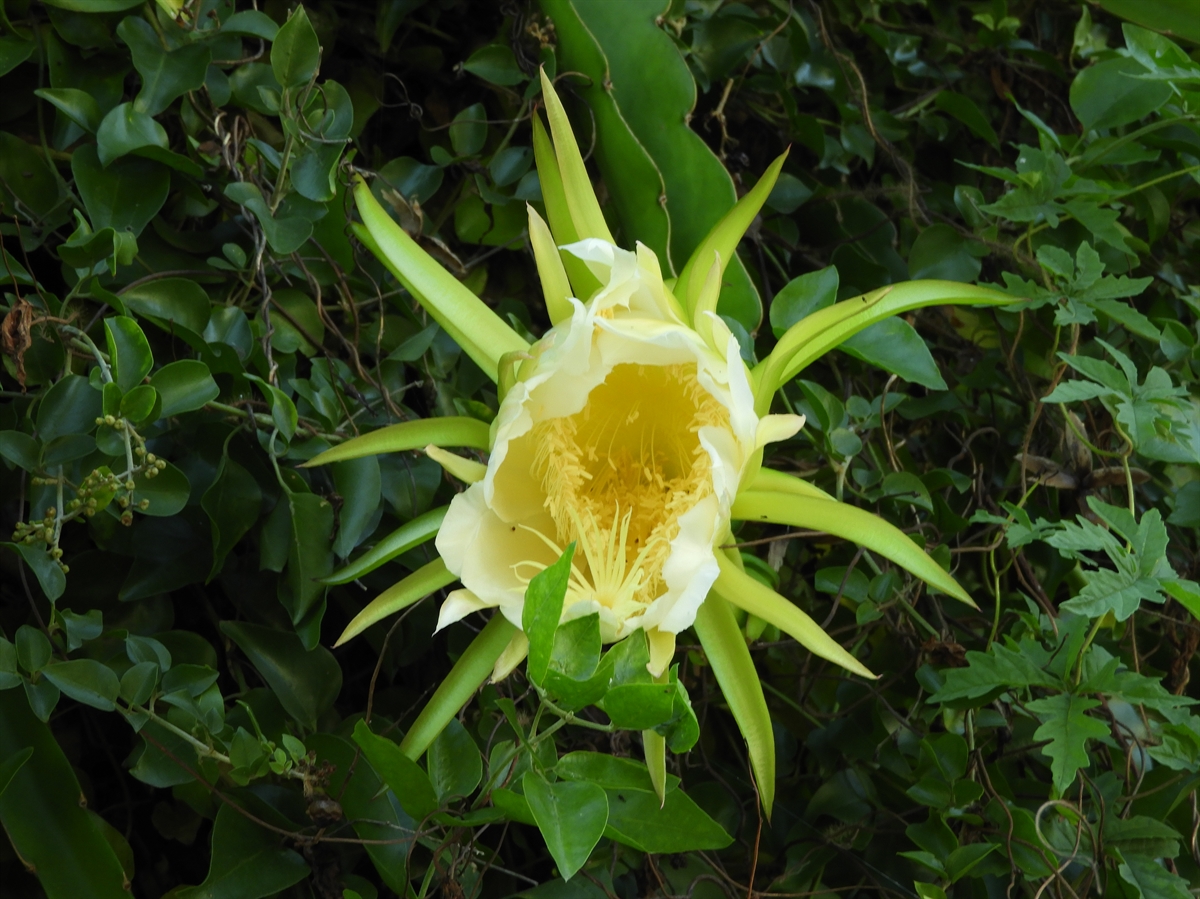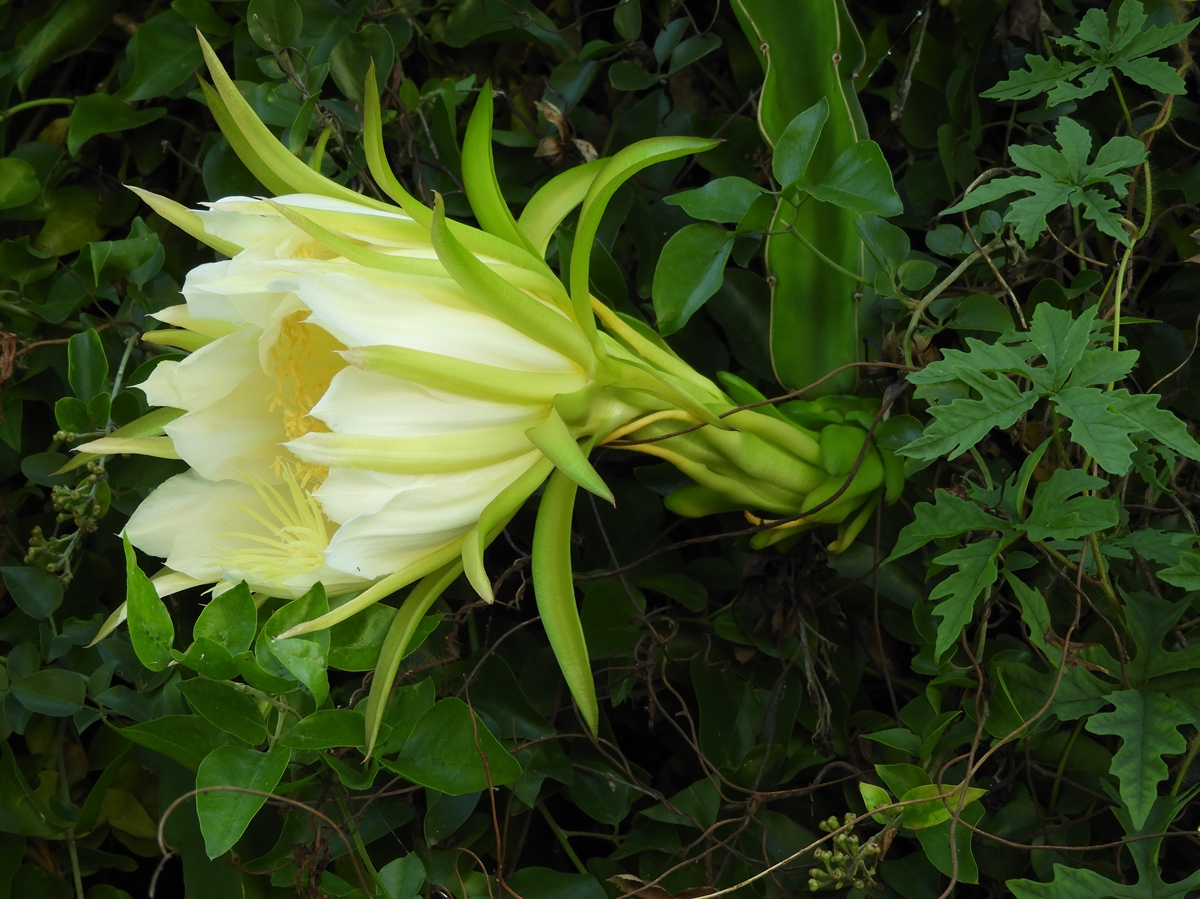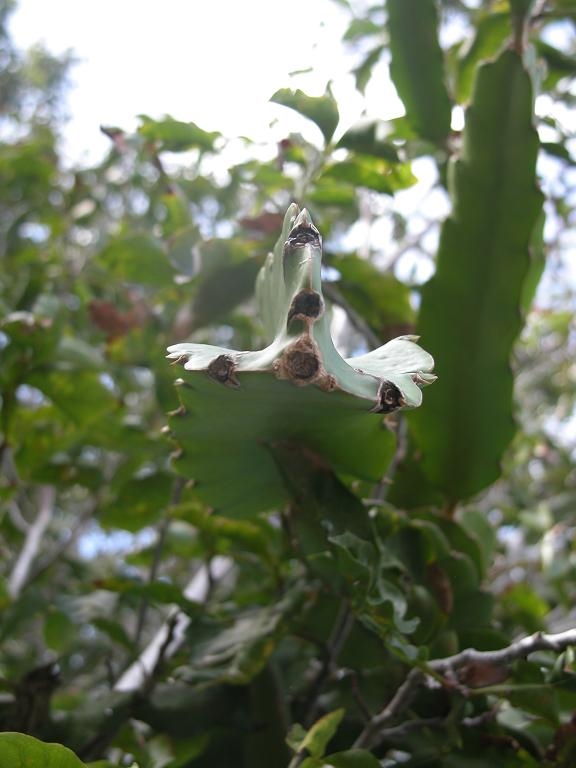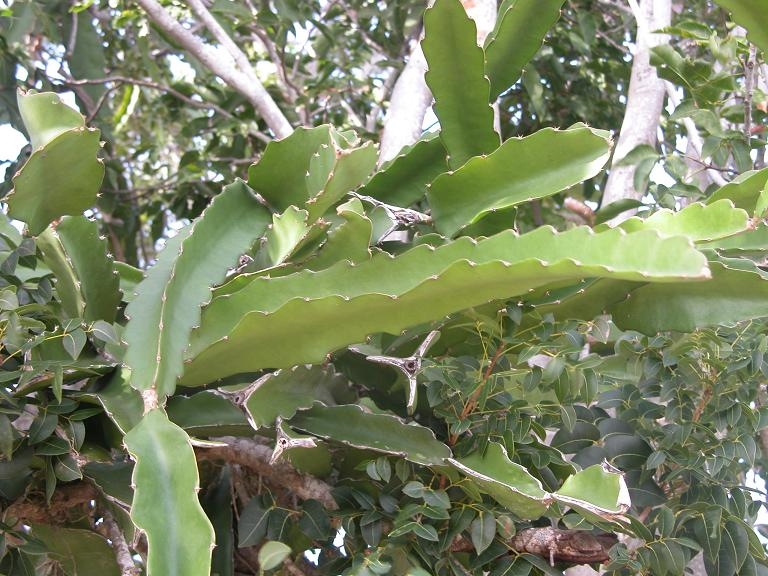Habit: Selenicereus undatus grows as a creeping/trailing succulent to 10 m in length. Each branch is 40-140 cm in length and 3-winged/lobed. Each wing is to 3 cm wide with spiny areoles along the crenate margin. The leaves have been reduced to spines.
The large (to 35 cm in length), actinomorphic flowers are arranged solitarily, emerging from areoles along the branch edges. The calyx has numerous green sepals. The corolla has numerous white petals, and there are numerous stamens. The calyx, corolla and androecium are fused to form a hypanthium. Inside the flower at the base of the hypanthium are nectaries. The inferior ovary has a single locule and numerous seeds. The fruit is a bright red berry at maturity.
Habitat: Selenicereus undatus grows climbing/trailing along trees in on along the edges of Dry Broadleaf Evergreen Formation – Woodlands (Scrublands) as well as over walls in cultivated areas.
Distribution: Selenicereus undatus is NOT native to the Lucayan Archipelago but occurs throughout the central and northern island groupings. It is native to Mexico and Central America but has now spread through Florida, the Caribbean region, southern South America, South Africa, and parts of Asia.
Medicinal/Cultural/Economic usage: Selenicereus undatus is not known to be used medicinally in the Lucayan Archipelago but is grown throughout the world as a cultivated species due to its beautiful, extremely fragrant night blooming flowers.
As with all cacti it is CITES listed.



